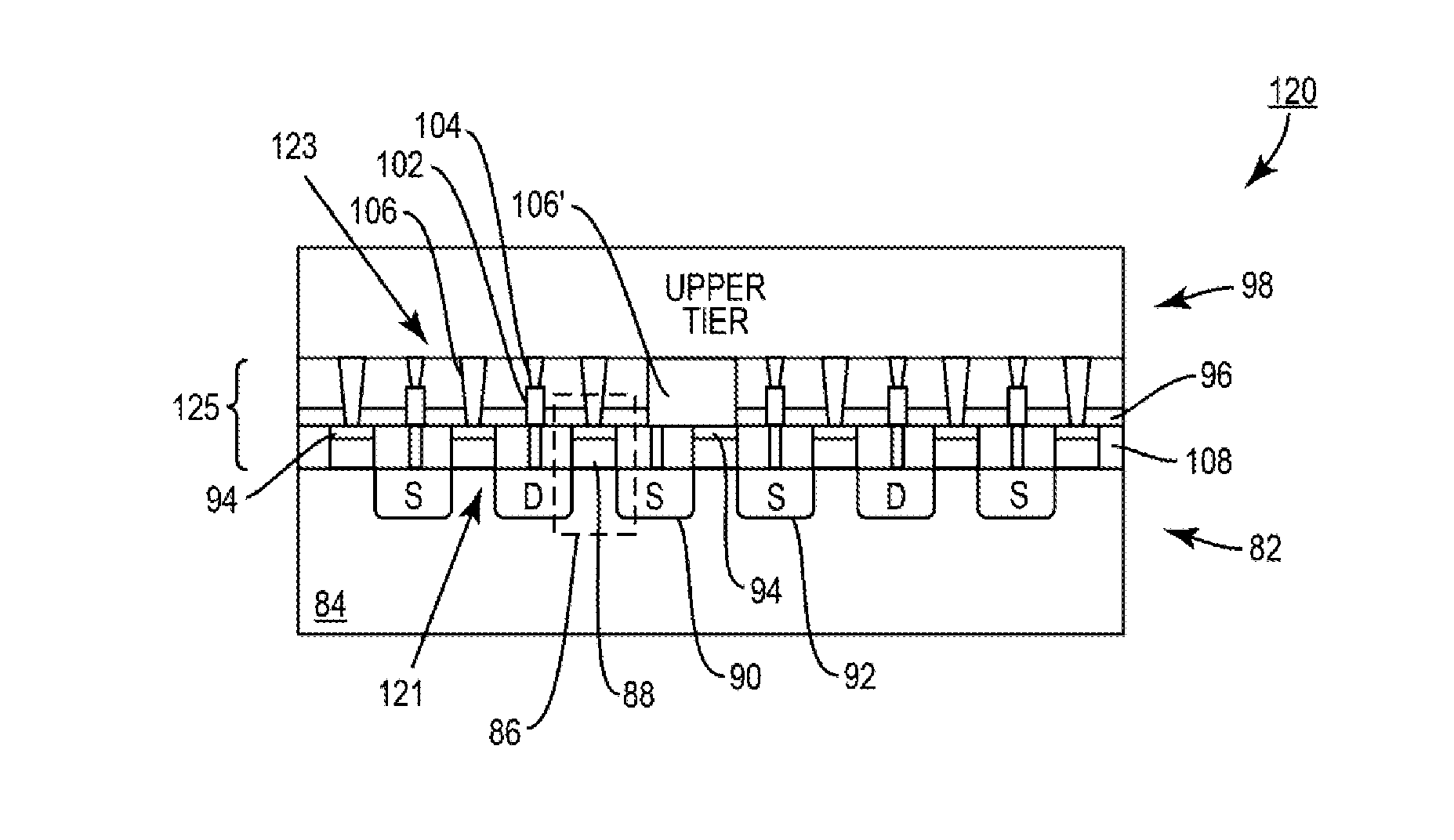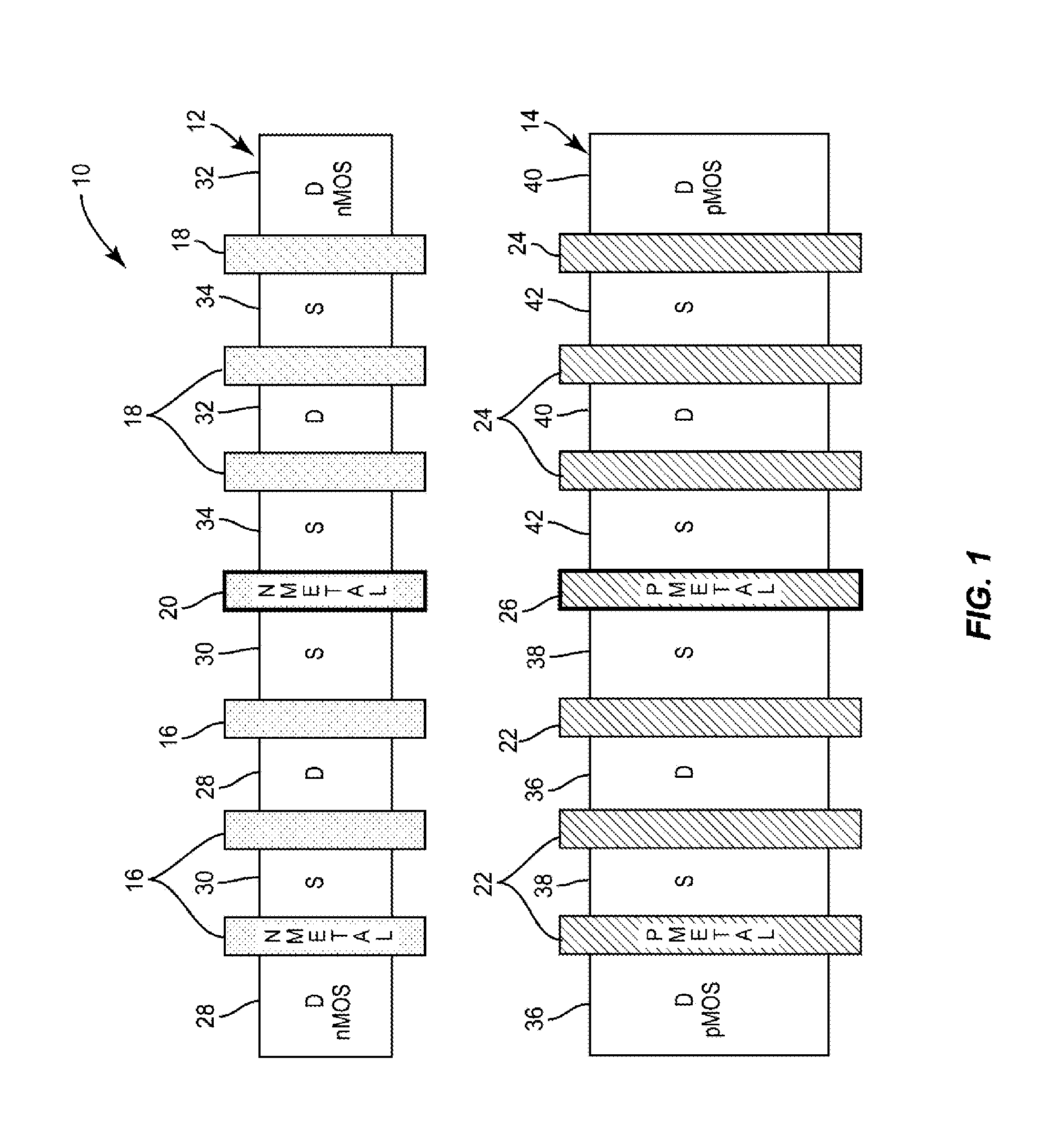Tie-off structures for middle-of-line (MOL) manufactured integrated circuits, and related methods
a technology of integrated circuits and tie-off structures, which is applied in the direction of electrical apparatus, semiconductor devices, semiconductor/solid-state device details, etc., can solve the problems of gate contact formation during the mol process, the pressure to increase processing capabilities while decreasing the size of the integrated circuit (ics), and the conventional manufacturing process is strained, so as to achieve sufficient connectivity and simplify the manufacturing of the integrated circuit (ics)
- Summary
- Abstract
- Description
- Claims
- Application Information
AI Technical Summary
Benefits of technology
Problems solved by technology
Method used
Image
Examples
Embodiment Construction
[0020]With reference now to the drawing figures, several exemplary aspects of the present disclosure are described. The word “exemplary” is used herein to mean “serving as an example, instance, or illustration.” Any aspect described herein as “exemplary” is not necessarily to be construed as preferred or advantageous over other aspects.
[0021]Aspects disclosed in the detailed description include tie-off structures for middle-of-line (MOL) manufactured integrated circuits, and related methods. As a non-limiting example, the tie-off structure may be used to tie-off a drain or source of a transistor to the gate of the transistor, such as provided in a dummy gate used for isolation purposes. In this regard in one embodiment, a MOL stack is provided that includes a metal gate connection is coupled to a metal layer through a metal structure disposed in and above a dielectric layer above a gate associated with the metal gate connection. By coupling the metal gate connection to the metal lay...
PUM
 Login to View More
Login to View More Abstract
Description
Claims
Application Information
 Login to View More
Login to View More - R&D
- Intellectual Property
- Life Sciences
- Materials
- Tech Scout
- Unparalleled Data Quality
- Higher Quality Content
- 60% Fewer Hallucinations
Browse by: Latest US Patents, China's latest patents, Technical Efficacy Thesaurus, Application Domain, Technology Topic, Popular Technical Reports.
© 2025 PatSnap. All rights reserved.Legal|Privacy policy|Modern Slavery Act Transparency Statement|Sitemap|About US| Contact US: help@patsnap.com



